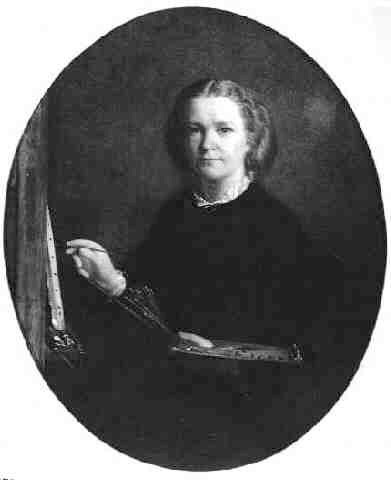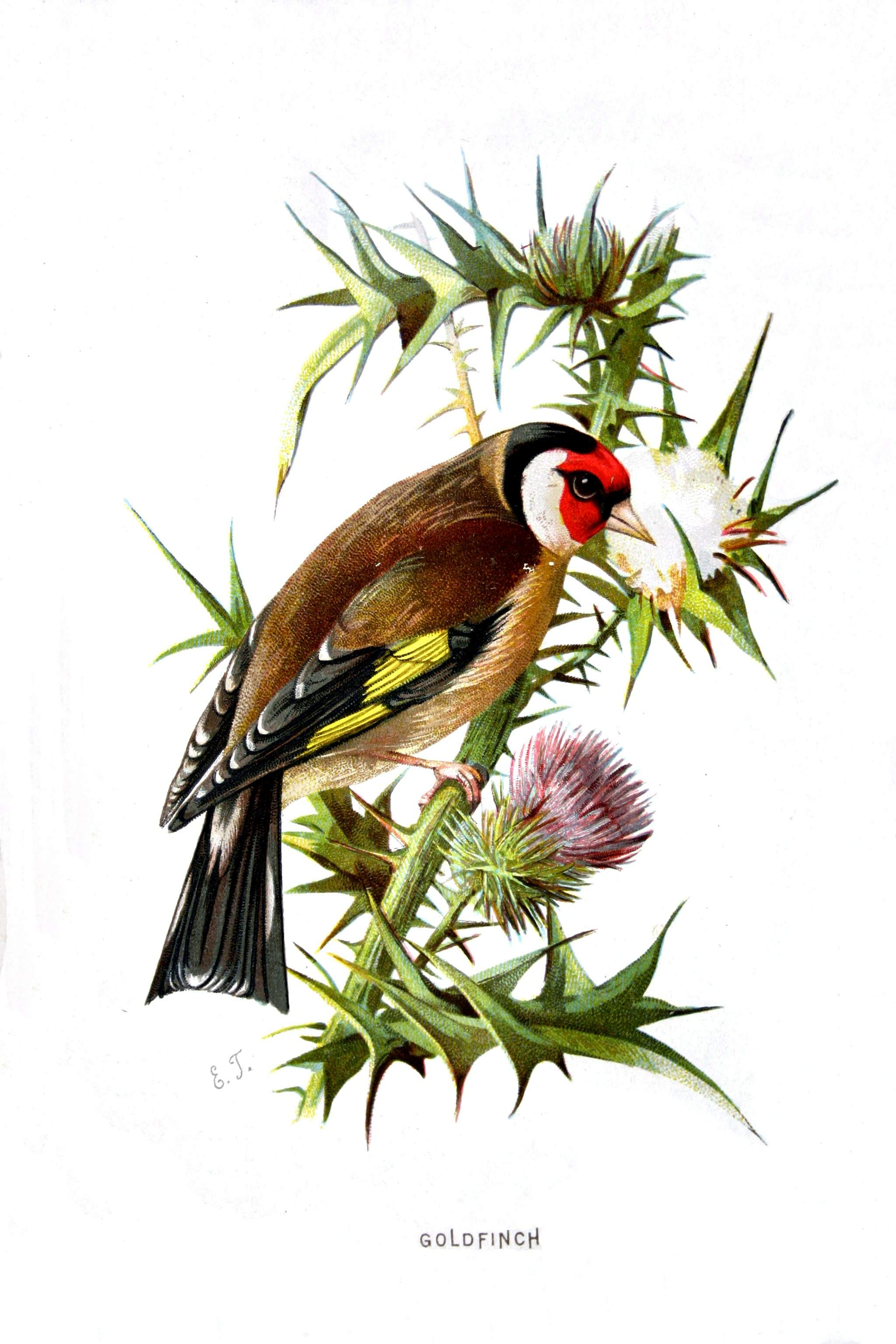Eliza Turck on:
[Wikipedia]
[Google]
[Amazon]

 Eliza Turck (1832–1891), was an
Eliza Turck (1832–1891), was an
A practical handbook to marqueterie wood-staining and kindred arts
Eliza Turck on Artnet
*https://www.flickr.com/search/?text=eliza%20turck {{DEFAULTSORT:Turck, Eliza 1832 births 1891 deaths 19th-century English painters 19th-century British women artists British genre painters British bird artists English illustrators English watercolourists Painters from London People from Islington (district) Women watercolorists

 Eliza Turck (1832–1891), was an
Eliza Turck (1832–1891), was an English
English usually refers to:
* English language
* English people
English may also refer to:
Peoples, culture, and language
* ''English'', an adjective for something of, from, or related to England
** English national id ...
portrait
A portrait is a painting, photograph, sculpture, or other artistic representation of a person, in which the face and its expressions are predominant. The intent is to display the likeness, personality, and even the mood of the person. For this ...
(including miniatures), genre
Genre () is any form or type of communication in any mode (written, spoken, digital, artistic, etc.) with socially-agreed-upon conventions developed over time. In popular usage, it normally describes a category of literature, music, or other ...
, bird and landscape
A landscape is the visible features of an area of land, its landforms, and how they integrate with natural or man-made features, often considered in terms of their aesthetic appeal.''New Oxford American Dictionary''. A landscape includes th ...
painter, illustrator and writer.
Life and work
Turck was born inIslington
Islington () is a district in the north of Greater London, England, and part of the London Borough of Islington. It is a mainly residential district of Inner London, extending from Islington's High Street to Highbury Fields, encompassing the ...
in London
London is the capital and List of urban areas in the United Kingdom, largest city of England and the United Kingdom, with a population of just under 9 million. It stands on the River Thames in south-east England at the head of a estuary dow ...
, where she showed an early aptitude for art and received lessons from her mother, Anne Louisa Tielkens (b. 1800 London
London is the capital and List of urban areas in the United Kingdom, largest city of England and the United Kingdom, with a population of just under 9 million. It stands on the River Thames in south-east England at the head of a estuary dow ...
), who was a talented amateur artist. Her father was Herman Jochim Christian Turck, a banker (b. 1792 Bailiwick of Guernsey
The Bailiwick of Guernsey (french: Bailliage de Guernesey; Guernésiais: ''Bailliage dé Guernési'') is an island country off the coast of France as one of the three Crown Dependencies.
Separated from the Duchy of Normandy by and under the ...
). Eliza was educated initially in Germany
Germany, officially the Federal Republic of Germany (FRG),, is a country in Central Europe. It is the most populous member state of the European Union. Germany lies between the Baltic and North Sea to the north and the Alps to the sou ...
and on her return to England, in 1848, studied for 6 months at Cary's School of Art in London. Afterwards, she took lessons in oil painting from William Gale, and, in 1852, entered the figure class of the Female School of Art in Gower Street for a further year. She studied for 14 months, from 1859 to 1860, at the Royal Academy of Fine Arts in Antwerp, Belgium, and was given some instruction by Nicaise de Keyser
Nicaise de Keyser (alternative first names: Nicaas, Nikaas of Nicasius; 26 August 1813, Zandvliet – 17 July 1887, Antwerp) was a Belgian painter of mainly history paintings and portraits who was one of the key figures in the Belgian Romantic-hi ...
, the director. Clayton, Ellen Creathorne. '' English female artists, volume 2'' (London, Tinsley brothers, 1876) p. 146 ff.
Turck exhibited at the Royal Academy
The Royal Academy of Arts (RA) is an art institution based in Burlington House on Piccadilly in London. Founded in 1768, it has a unique position as an independent, privately funded institution led by eminent artists and architects. Its purp ...
from 1854, and also at the British Institution
The British Institution (in full, the British Institution for Promoting the Fine Arts in the United Kingdom; founded 1805, disbanded 1867) was a private 19th-century society in London formed to exhibit the works of living and dead artists; it w ...
, Suffolk Street
The Royal Society of British Artists (RBA) is a British art body established in 1823 as the Society of British Artists, as an alternative to the Royal Academy.
History
The RBA commenced with twenty-seven members, and took until 1876 to reach fif ...
and elsewhere. Her work included genre paintings, literary subjects, coastal scenes, architecture, birds and miniatures, painted in oil
An oil is any nonpolar chemical substance that is composed primarily of hydrocarbons and is hydrophobic (does not mix with water) & lipophilic (mixes with other oils). Oils are usually flammable and surface active. Most oils are unsaturate ...
or watercolour
Watercolor (American English) or watercolour (British English; see spelling differences), also ''aquarelle'' (; from Italian diminutive of Latin ''aqua'' "water"), is a painting method”Watercolor may be as old as art itself, going back to t ...
. Her works at the Royal Academy included ‘Rus in Urbe’, 1858, ‘Lady Dorothy in Breton Costume’, 1880 and ‘In St. Mark’s, Venice’, 1885. Her Royal Academy picture of 1856 ‘Cinderella’ was one of forty pictures selected by John Ruskin
John Ruskin (8 February 1819 20 January 1900) was an English writer, philosopher, art critic and polymath of the Victorian era. He wrote on subjects as varied as geology, architecture, myth, ornithology, literature, education, botany and po ...
for criticism in his Academy Notes: “Very pretty, and well studied, but Cinderella does not look the lady of the fairy tale. I am rather puzzled myself to know how her relationship to her remarkable godmother could best be indicated so as to leave her still a quite real little lady in a real kitchen. But I am glad to see this sternly realistic treatment, at all events’.
She exhibited at the International Exhibition in 1871, and her watercolours of Brittany
Brittany (; french: link=no, Bretagne ; br, Breizh, or ; Gallo: ''Bertaèyn'' ) is a peninsula, historical country and cultural area in the west of modern France, covering the western part of what was known as Armorica during the period o ...
were shown at Rogers Gallery, Maddox Street in 1879. About these The Art Journal
''The Art Journal'' was the most important British 19th-century magazine on art. It was founded in 1839 by Hodgson & Graves, print publishers, 6 Pall Mall, with the title ''Art Union Monthly Journal'' (or ''The Art Union''), the first issue of ...
wrote: ‘Her colouring is close to nature and full of tender greys, especially in the sky, while her touch is broad, free and Cox-like.’
She provided many illustrations for the 1883 edition of W. Swaysland's 4-volume "Familiar Wild birds" She also wrote "A practical handbook to marqueterie wood-staining and kindred arts" (pub. L. Upcott Gill, 1899).References
External links
*Eliza Turck on Artnet
*https://www.flickr.com/search/?text=eliza%20turck {{DEFAULTSORT:Turck, Eliza 1832 births 1891 deaths 19th-century English painters 19th-century British women artists British genre painters British bird artists English illustrators English watercolourists Painters from London People from Islington (district) Women watercolorists